Have I ever mentioned that I’m sensitive to caffeine? Like “Deanna Troi” sensitive.

Upon my first exposure to yaupon holly – yerba mate’s sweeter, ‘Merican cousin – I hadn’t prepared for the absolute caffeine zing! it imparted. It took three melatonin pills just to slow my heart rate enough to sleep that night. For a person whose idea of a morning pick-me-up is a second flush Darjeeling, that caffeine wallop was a bit much. I never thought I’d need something that strong again. Until . . .
Enter Lou Thomann.
I actually met Lou back in 2013 at my first World Tea Expo, during the first meeting of U.S. tea growers. We were formally introduced, but I had no idea what his particular crop was. In fact, I mistook him for a Hawaiian tea grower, which took an awful lot of mental talent (on my part) to do, considering he hailed from Savannah, GA. And sounded like it.
His works caught my eye some months later when I saw a picture posted by Jason McDonald (of The Great Mississippi Company). In said pic, he was swigging a particularly dark brew, but it wasn’t a typical tea. No, it was an herbal infusion – one I’d been researching for years. Freakin’ yaupon holly.
I didn’t know what Thomann’s plans were with the caffeinated herb, but I kept an eye on his Instagram for progress. Over the last decade, he had made the acquaintance of one George Ryan, an ex-chef/salesman. George wanted to explore sales on the food and beverage side, whereas Lou had aspirations of cultivating yaupon holly into some sort of ready-made product. From various caffeine-fueled meetings, ASI Tea was born.
Their mission statement was simple. The RTD (ready-to-drink) market was strong in the U.S., particularly in the South. Yaupon holly was native to the South. Sweet tea was the gasoline of choice. Energy drinks were big with the younger demographic. Why not create yaupon blends for the ready-to-drink market, and gear them to the sweet tea trade as well?
Originally, cultivating yaupon for a loose leaf product was a secondary consideration. But as the business model grew (and with interest rising among snobs like me), they decided to make a stab at a loose yaupon offering.
Before their wares, I hadn’t tried yaupon holly in its roasted form. I was hesitant at first because I feared there would be some loss of the herb’s natural sweetness. That dread was assuaged when I received both roasted yaupons. Yes . . . both.
I received two versions of this “tea”.
One came in a canister and contained a dustier cut, wrapped in do-it-yourself, stringed filter bags. Lou had informed me that they were experimenting with different leaf cuts. They wondered if a smaller leaf cut would yield a greater caffeine delivery.
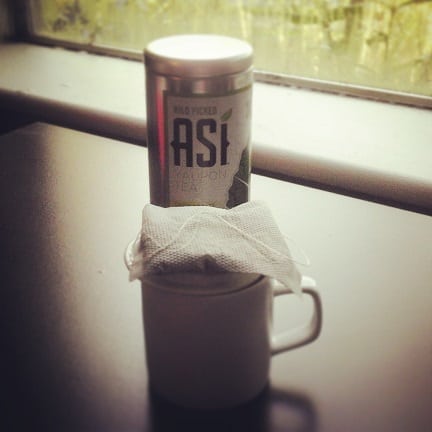
When I first opened the canister, it was like a plume of leaf smoke pummeled my face. I coughed through the laughter. It was as if a cannon had fired off at close range in front of me.
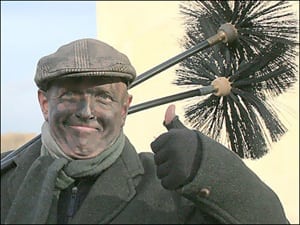
The plumage sure smelled good, though. I was reminded of a charcoal-roasted oolong – not as deep as a Da Hong Pao, but resembling a Ti Kwan Yin. Never thought I’d say that about an herb.
When I told this story to Lou, he joked, “Er, consider that our yaupon matcha.”
That garnered a chuckle or five.
I didn’t have time to give it a formal treatment when I first got it. However, I chose to make that my to-go beverage for work. One night that week, I only managed about four hours of sleep – due to anxiety – and needed something strong for the morning. I took one of the filter bags, plopped it into my travel mug, poured hot water over it, and left.
At first sip, my pupils dilated. Colors sharpened. My teeth gritted. Nostrils flared. Caffeine hit me like a charging rhino high on barbiturates. I wove through traffic, cursed at slow Subarus, and made it to work in record time. I might as well have had hyperdrives on my dainty little Ford Focus.
Oh yeah, and it tasted good – deceptively smooth and toasty. Three infusions lasted me the entire day. I barged through my work shift – chest flexed. Full disclosure: I lived on this for about a week.
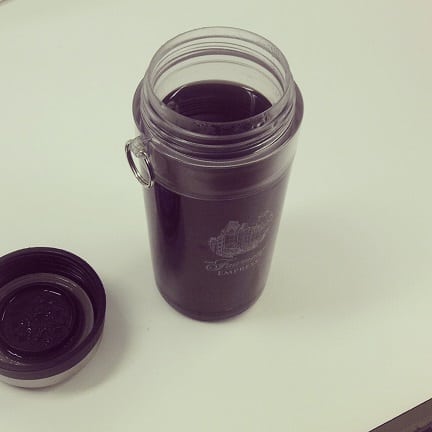
The second version was the standard fannings leaf cut. Some stems were present among the broken leaves, and the color palate ranged from dark green to brown. It smelled just like the dust-cut, but a bit sweeter on the nose than the smaller leaf bits. There was also a stronger, roastier and herbaceous presence to the aroma.
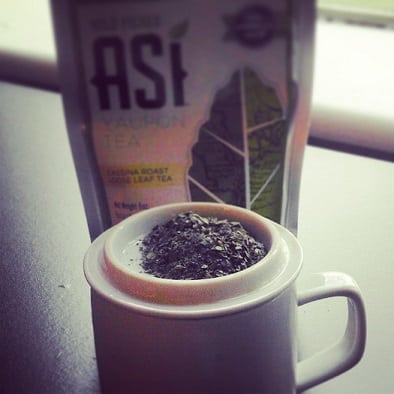
For brewing, I used about a teaspoon of leaves and a 6oz. steeper mug filled to the brim with boiled water. For timing the infusion, I simply played a four-minute song (Iris’s The Harder We Fight It) to completion. Y’know, to get even further pumped.
After steeping, pouring this out was a chore. The lip on my steeper cup was too wide, and leaf particles came out with the water. Like, a lot of leaf particles. I worried there’d be swimmy, leafy bits in the brew. Luckily, all the herb pieces simply settled at the bottom of the brown-green liquor.
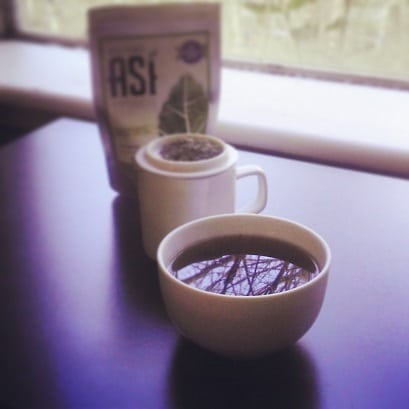
The taste was sweet, smoky, and slightly floral with a small hint of astringency on the end. And the caffeine woosh! hit almost immediately, taking the fast lane for my forehead. The aftertaste was like a bearskin rug on my tongue, just this numbing, warm creaminess that lingered with a trace of burnt wood.
I’m conflicted about which way I prefer yaupon prepared. I really liked the greener, un-roasted version, but there was certainly a depth of character to the roast. Both were an instant jolt of caffeine, which is nice on those difficult mornings. The roasted just kicked me in the teeth harder – southern-style. For not only did it make me feel like I could grab life by the balls after drinking it, but there was also a sense I could walk away from any explosion.

Teacup in hand.
Pinky out.


